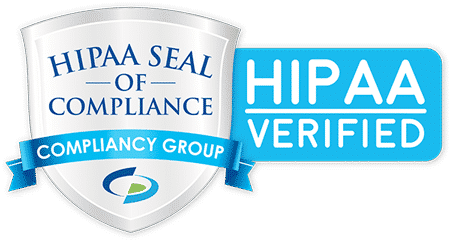
With everything that goes into running a business, it’s easy to overlook some things, like your IT and its security. It’s vital to safeguard each piece of technology that comes in contact with your company, whether it’s your internal servers, your employees’ mobile devices, or something else. That’s also why following best practices, like regularly evaluating your IT planning strategy and utilizing managed IT services is the number one way to remain vigilant and protect your information.
7 Commonly Overlooked Cybersecurity Risks
Without a solid strategy, security policy for remote workers, and experts helping make sure nothing falls through the cracks, you could fall to these seven common IT cybersecurity risks.
1. Hacked Personal Devices
More and more organizations are allowing their employees to use their own devices for connecting to the company network and accessing work-related systems. This practice is known as bring your own device (BYOD). However, there are certain cybersecurity risks that come with BYOD. Some of these BYOD security risks include data leakage, device infection, and less control over what apps are used and what websites are visited.
2. IoT Cybersecurity Cracks
Smart devices have made work life much easier, cementing them as a staple in most office settings. These internet of things (IoT) devices allow for everything from real-time information gathering to easy communication. The problem is, cybercriminals love IoT technology just as much as we do. IoT devices aren’t exactly known for being bastions of security, and by adding them to your IT, you increase your attack surface. Without the proper security protocols in place, you are essentially creating new cybersecurity risks for your business.
3. Lost, Stolen, or Hacked Equipment During Travel
Anytime technology or equipment leaves your facility, it is at risk of being stolen or hacked. Consider how common it is to drape a computer bag over the back of a chair in an airport, or leave a laptop on the seat next to you at a café. These instances create easy targets for thieves and often result in a larger loss of business information than most other malicious hacks.
And speaking of malicious hacks, whenever someone accesses an open Wi-Fi channel, like those in hotels during corporate travel, their equipment can be accessed by anyone else on the same network. The best way to protect your equipment and data from these cybersecurity risks is to securely encrypt each device and ensure that it can be remotely wiped if needed.
4. Unsecured Servers
According to a study from Identity Theft Resource Center, U.S. data breach incidents tracked in 2017 hit a new record high of 1,579 breaches. And one of the easiest ways for those breaches to occur is through unsecured servers. Whether you leave your server physically vulnerable behind an unlocked door or aren’t using the proper cybersecurity risk measures, small and medium companies often overlook common safety measures that would protect their data.
Protect your data by double-checking your cybersecurity risk measures, and always use the most powerful tools available, such as:
- Firewalls
- Virtual Private Network (VPN)
- Secure Remote Access
- Intrusion Detection
5. Downloading Unverified Third-Party Software
It’s common for businesses to look for free software that can provide benefits like project management or time-tracking. While some of this software is harmless, it is an easy way to infiltrate a company computer with a virus. It’s very common for malware to hide within an unverified download. And once it’s in your company’s computer, it can destroy or steal valuable information.
6. Email Phishing
In a 2019 Data Breach Investigations Report, we learned that 50% of all security incidents are caused by people inside the organization. Most of those cases are not malicious, intentional attacks but simply negligence, like delivering documents to the wrong person or clicking on a suspicious link in an email. In fact, email phishing, or opening an attachment or link from an unknown, unverified sender, is one of the most common ways hackers infect companies with malware.
7. Shared Credentials
Worker negligence is a frequent cause of most security breaches. Workers often share logins or credentials with each other while out of the office or in a rush. This shows a lack of accountability and leads to compromised security—especially in emails. Your employees are the first line of defense against most common IT cybersecurity risks. So, it’s vital they have at least basic cybersecurity training.
And you can get that training, as well as verification that none of these risks are overlooked, when you use managed IT services. With these services, you have an expert constantly planning, preparing, and checking on cybersecurity risks and more for you. They can help you run your business smoothly and be responsible for your IT protection, giving you peace of mind with your customized solutions.
Fortify Your IT With Our Cybersecurity Services
Keep yourself and your company safe from the most commonly overlooked cybersecurity risks with the help of Net3 IT. Our team implements solutions to lower your cybersecurity risks. We can also explain the benefits of a firewall and other cybersecurity solutions in your overall protection. Let us help you close up your security gaps.
Contact us now to learn more about how managed IT services can defend your company from cybersecurity risks.

About Us
Since 2012, Net3 IT has offered enterprise-level IT experience and industry knowledge to help Knoxville businesses make the right decisions. We are committed to our customers’ success by providing cost-effective, high-value IT services, VOIP phone services, and strategic consulting.

